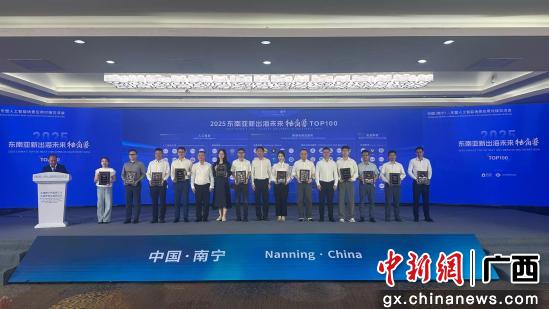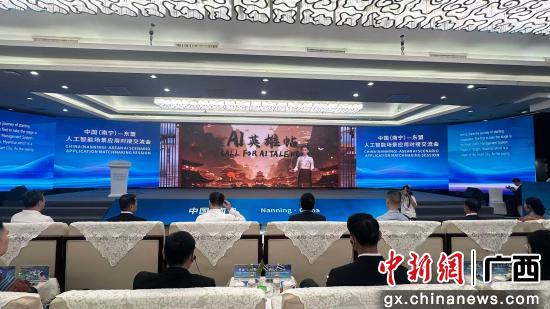The China (Nanning)-ASEAN AI Scenario Application Matchmaking Session was held recently in Nanning, capital of south China's Guangxi Zhuang Autonomous Region, aimed at connecting regional AI needs with Chinese solutions.
Organizers reversed the traditional trade approach, with ASEAN members first presenting their technological challenges before Chinese firms pitched corresponding AI solutions. The format sought to create more targeted partnerships and expand Chinese AI presence in Southeast Asian markets.

The venue for the China (Nanning)-ASEAN AI Scenario Application Matchmaking Session in Nanning, south China's Guangxi Zhuang Autonomous Region. (People's Daily Online/Li Xinyu)
The summit emphasized practical AI applications and international collaboration, drawing about 350 participants from government, business, academic and corporate sectors. Attendees came from China, Southeast Asian nations including Vietnam, Laos, Malaysia, Thailand and Myanmar, plus Japan, South Korea and Mexico.
Together, they explored AI applications in agriculture, industry, education, health care, transportation, and culture and tourism.
Addressing the event, Nanning Vice Mayor Wei Jiang said AI's true value lies in its application across industries. With geographic proximity, strong platforms and openness to cooperation, Nanning is well-positioned to serve as both a testing ground and showcase for China-ASEAN AI cooperation, turning technology into concrete development outcomes that benefit people in the region.

The venue for the China (Nanning)-ASEAN AI Scenario Application Matchmaking Session in Nanning, south China's Guangxi Zhuang Autonomous Region. (People's Daily Online/Li Xinyu)
A highlight of the event was the "AI Challenge Invitation," which served as a key platform for connecting supply and demand. Before the event, organizers had widely collected AI application needs from ASEAN countries, Regional Comprehensive Economic Partnership members and Belt and Road Initiative countries. The survey produced a catalog of 84 international AI application needs spanning smart cities, education, industry and agricultural technology.
(Source: People's Daily)
